GIMP
News
Docs
Tutorials
More
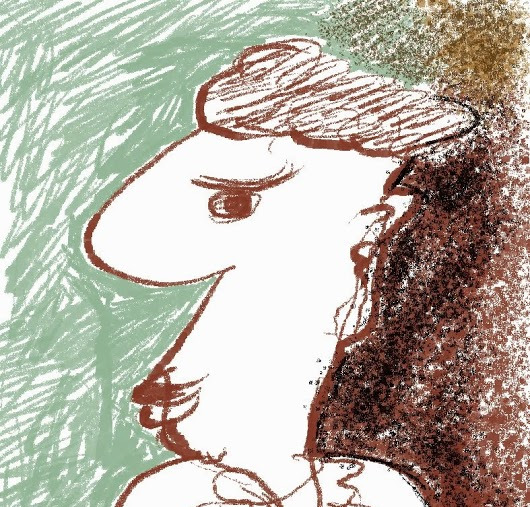
GIMP provides two very different types of brushes: the parametric (.vbr) and raster (.gbr and .gih). The scope of this article mainly demonstrates the quality and possibility of parametric brushes. I am writing a dedicated article about the GIMP brushes and I have pasted the short intro about them:
The parametric brush is a vector brush and it has the great possibilities and flexibility for many different tasks and branches (graphic design, photography, digital painting, etc…) The raster brush is also versatile and has great pictorial qualities, but is more complex to build because it is managed as an image. Probably the choice, between raster and/or parametric brush, is done by the kind of task, the painter’s style and of his/her artistic background/knowledge/taste, etc.
It seems artists haven’t yet realized the full usefulness and versatility of GIMP’s parametric brushes, especially when paired with the proper dynamics. This article shows how to use parametric brushes to make convincing emulations of dry media such as pencil, color pencil, charcoal, chalk and pastel.
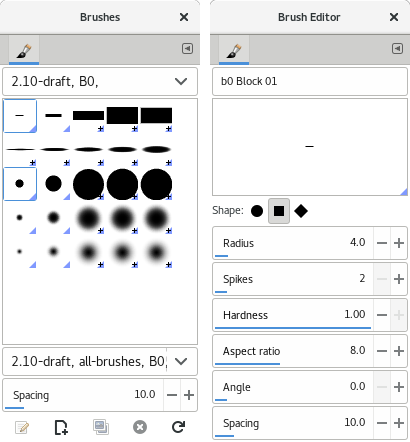
The default shapes are round, square and diamond. It’s also possible create a great variation of the shapes using the different parameters to control the shape and its aspect (radius, spikes, hardness, aspect ratio, angle and spacing).
Some of the advantages of parametric brushes are:
In 2013, I began to study emulating dry media with parametric brushes, they are essentially the drawing tools such as pencil, crayon, charcoal and pastel. I have also invited Gustavo Deveze and Elle Stone to use my parametric brush set with 2 paint dynamics dedicated exclusively to dry media.
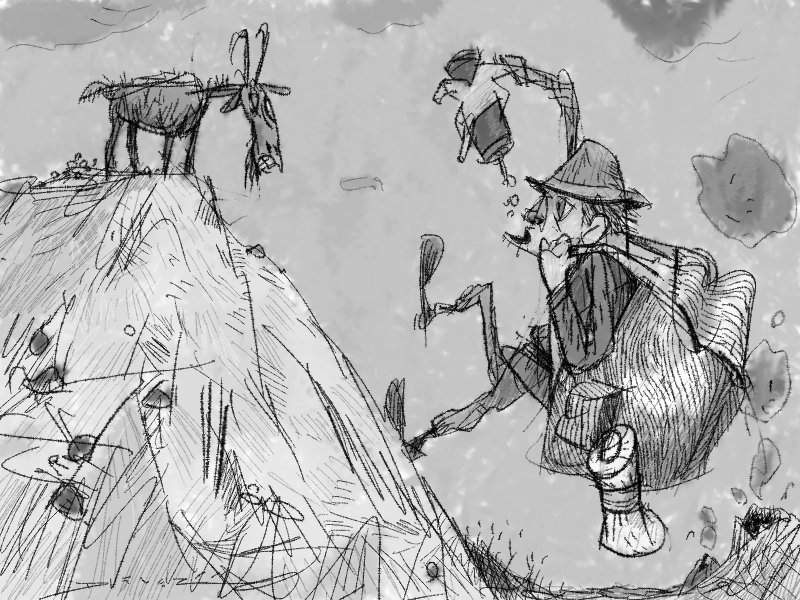
To explore the dry media effects with parametric brushes, I have revised initially in 2013, the Pencil Generic Paint Dynamics to adapt better it to other dry media. After working with the variations of Pencil Generic, I have found a good compromise, but the methodology was complex and based only on trial and error.
I have thought it interesting to understand better real media and to try a way of modeling the effects via paint dynamic making a good attempt of real variables on these media. The first steps have demonstrated good results, and I will describe this methodology in another article.
I have also verified that it’s possible to use different tools, pencil, paintbrush and airbrush. Effectively the airbrush is most interesting mainly due to the Rate and Flow controls.
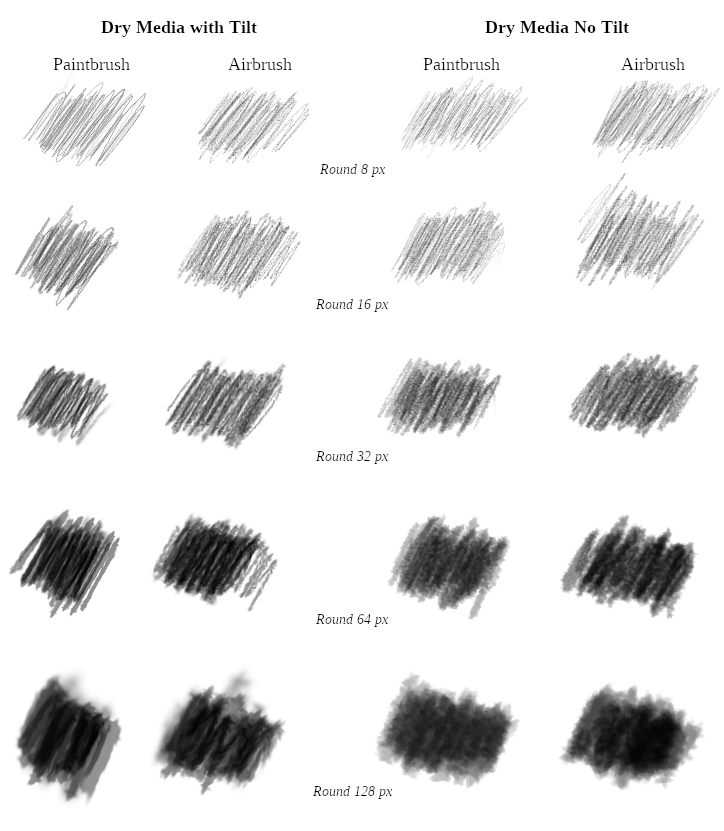
In general, all brush sizes are working well, but mainly between 8 ~ 64 pixels seems the best compromise. The large brushes are interesting for covering large areas but it’s not possible to have a good shape (they are appearing a bit soft).
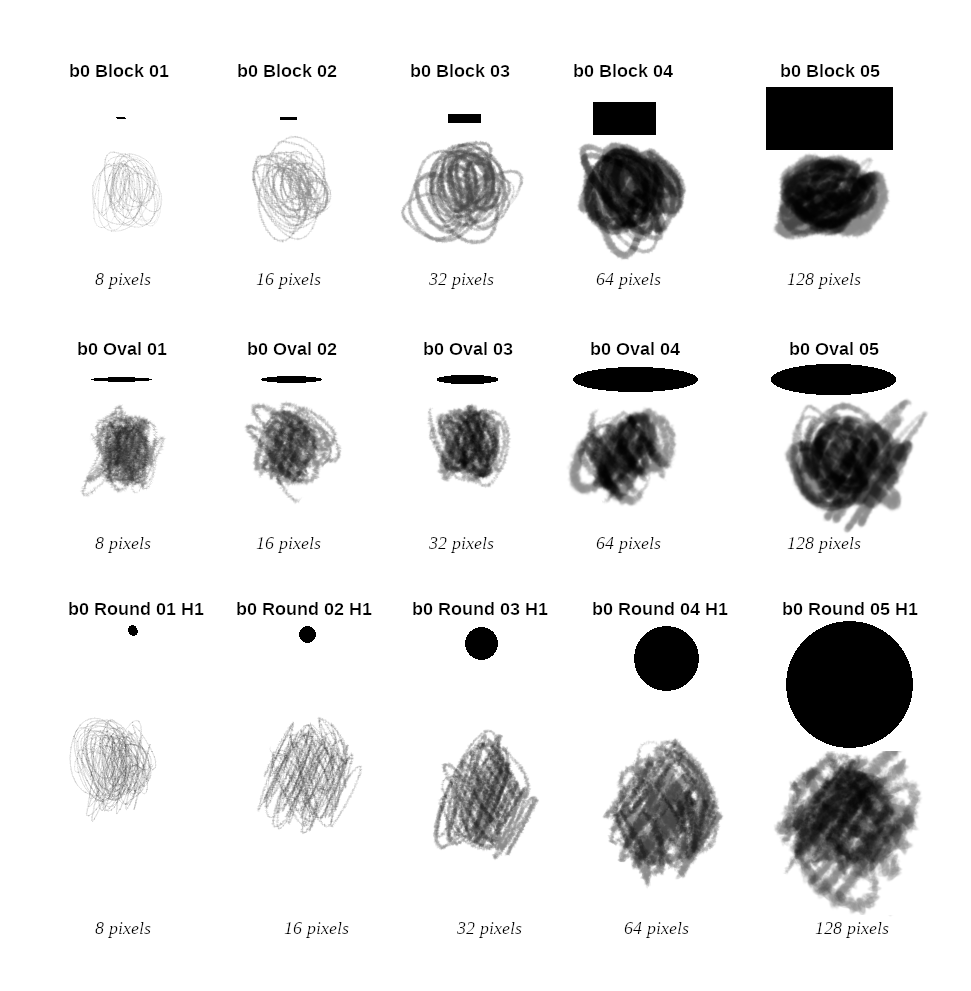
The brush set, in the ‘B0’ folder, contains the .vbr basic brushes, round and block (hard and soft versions). There are two paint dynamics: one for graphics tablet’s stylus with tilt and not. The version with tilt is fun to use and it’s possible to emulate well the effect when you are inclining the tool in real cases.
In general, it seems that users prefer to pick the brushes directly on the dialog palette. The parametric brush is so easy to modify and create our own set… but many people don’t have time and ‘energy’ to build own our brushes. To those, that they think that is a large set they could delete the brushes not usable for them.
Download Brush Set + Paint Dynamics.
To emulate better the dry media I recommend using the Airbrush Tool with these settings on Tool Options:
¹ Only in GIMP 2.10 and 2.99 Devel.
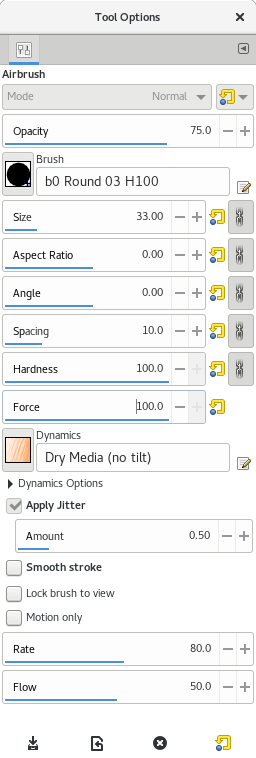
We have tested on GIMP 2.10, 2.99 and 2.8 with good results.
To Elle Stone and Gustavo Deveze who helped me with paint dynamics tests and images to illustrate this document. Also, thanks to Pat David for giving me support with GitLab and formatting of the article for www.gimp.org.
